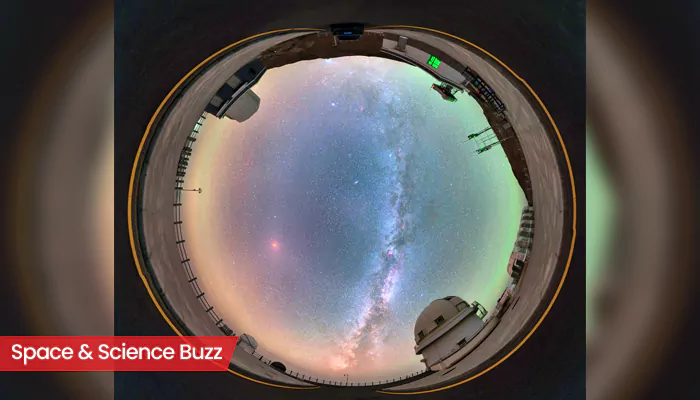Here are today’s most important updates from the realm of Science and Space.
As the Moon Goes Dark, the Galaxy Glows Bright
Millions of skywatchers across Asia, Africa, Europe, and Australia were treated
to a rare celestial spectacle on the night of September 7–8, when a total lunar eclipse transformed the brilliant full Moon with a reddish hue. As Earth’s shadow fully engulfed the Moon, something remarkable happened, the Milky Way and other faint celestial phenomena lit up the night sky with unprecedented clarity. Normally, the overwhelming glare of a full Moon makes observing subtle features of the night sky nearly impossible. But with its light dramatically reduced, stargazers saw conditions resembling those of the world’s darkest skies.
Cosmic Ageing: Spaceflight Accelerates Stem Cell Decline

Spaceflight is accelerating the ageing process in blood-forming stem cells vital to human health, according to a new study analysing samples from four SpaceX resupply missions to the International Space Station. The NASA-funded research, spotlights another biological challenge facing astronauts as humanity prepares for longer missions beyond Earth. The changes are traced to microgravity conditions and increased radiation levels in space, which together disrupt cell health and boost ageing processes. Such dysfunction can reduce resilience against infections, cancer, and tissue injury. The affected stem cells also showed inflammation and stress within their mitochondria, the cell’s energy producers, and began activating “dark genome” regions typically kept silent for stability.
Webb Just Brought Us Closer to Finding a Second Earth

NASA’s James Webb Space Telescope has delivered its most detailed look yet at TRAPPIST-1 e, a world scientists call a contender for “Earth 2.0,” raising hopes that this distant exoplanet may possess the right conditions for life. Using powerful infrared sensors, Webb observed TRAPPIST-1 e as it transited its host star, analysing starlight filtering through any atmosphere the planet may have. TRAPPIST-1 e is one of seven Earth-sized planets orbiting a cool red dwarf star 40 light-years away. Its orbit places it firmly in the “habitable zone” where water could exist on the surface, but only if an atmosphere is present.
Study Shocker: Mercury Contamination Adds to Delhi’s Air Woes

A new study conducted by Indian researchers has highlighted Delhi's pollution crisis, with toxic metal mercury found in the capital city's air. Researchers reported that Delhi's air contained 6.9 nanograms of mercury per cubic metre on average, which is much higher than the global average of the Northern Hemisphere (1.7 nanograms per cubic metre) and the Southern Hemisphere (1.3 nanograms per cubic metre). The first-of-its-kind study, conducted by scientists from the Indian Institute of Tropical Meteorology (IITM), Pune, has been published in the journal Air Quality, Atmosphere & Health, by Springer. It analysed data from 2018 to 2024 on gaseous elemental mercury (GEM), a key atmospheric pollutant.










